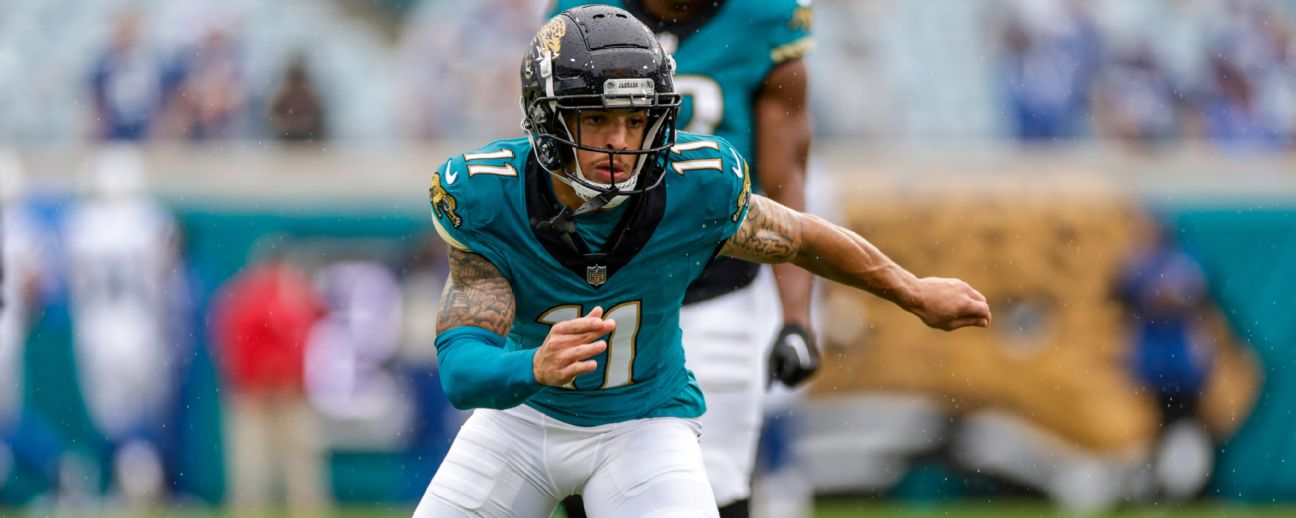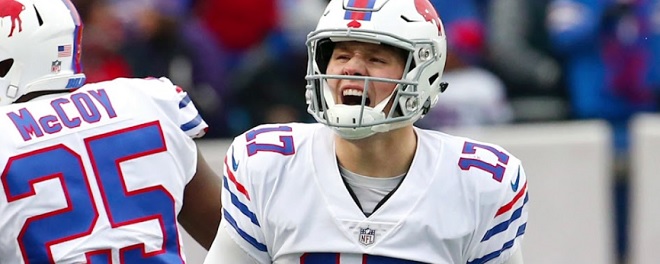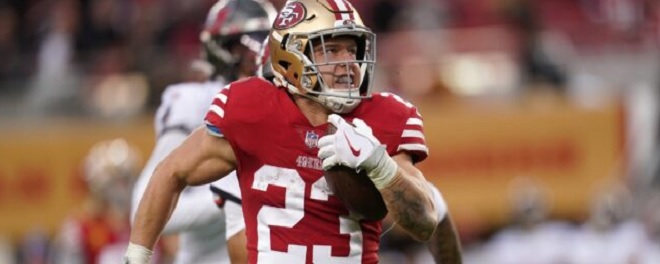By Hunter Ansley
Hunter is a freelance writer who has been published by ESPN the Magazine. He runs Draft Zoo.com
Send Hunter an e-mail here: [email protected]
All other e-mail, including advertising and link proposals, send to: [email protected]
Here’s a list of the top college fantasy football running backs for 2009.
2009 College Fantasy Football Rankings – Running Backs:
Last Updated: July 11, 2009
-
 Jahvid Best, California
Jahvid Best, California
2008 Stats: 194 carries 1,580 yards 15 TD, 27 receptions 246 yards TD
Jeff Tedford gets plenty of credit for being a college quarterback guru, but you don’t hear enough about the consistent success of his ground games. I mean he’s coached J.J. Arrington, Justin Forsett, Marshawn Lynch, and now Jahvid Best. Cal always has a strong ground game, and Best could be his… best. You have to go back eight years to find a Cal team that didn’t produce a 1,000-yard rusher.
Best could be in for his biggest season yet. He battled injuries all of last year and still managed almost 1,600 yards and 16 touchdowns. He finished the season strong with four straight 100-yard games, including a 201-yard performance against Stanford and a 311-yard outing against Washington. Of course, both of those teams are on the schedule again. He did just have elbow and foot surgery in January, so he’s a bit of an injury concern, but you have to take some risks to win your league. With Kevin Riley still unproven at quarterback, Best is going to get the ball plenty, and I wouldn’t be surprised to see his reception total rise. He’s going to score a lot for Cal, and he’s a real threat to notch 20 TDs on the ground.
-
 Kendall Hunter, Oklahoma State
Kendall Hunter, Oklahoma State
2008 Stats: 241 carries 1,555 yards 16 TD, 22 receptions 198 yards TD
It’s almost hard to rank Hunter this high with all of the other weapons on the Oklahoma State team. But somehow, even with Dez Bryant cathing a zillion balls, he still managed to score 17 times. And there’s good reason to believe he won’t drop off as a junior.
He opened the season with at least 100 yards and two scores in the Cowboys first four games, and finished the season with nine 100-plus yard days. He’s not as big a threat as Best to go over 200, but he will consistently get you good totals. As bad as the Oklahoma State defense is, they still could be ahead enough to run out some games. And their spread rushing attack is still heavily used in shootout situations. With Brandon Pettigrew off to the NFL, look for Hunter to become a more viable receiving threat as a safety net for Zac Robinson.
-
 Vai Taua, Nevada
Vai Taua, Nevada
2008 Stats: 236 carries 1,521 yards 15 TD, 30 receptions 243 yards 3 TD
Vai Taua is another guy who gets overlooked due to the exceptional play of his quarterback and the fact that he’s on a team with a strong passing game. But Colin Kaepernick’s success shouldn’t cause you to overlook Taua. In fact, it’s more reason to grab him early.
When Luke Lippincott, a 1,420-yard rusher, went down in the second game last year, Wolfpack fans were worried. That is until Taua came in and rushed for 1,521 yards and 15 TDs despite not starting until Game 3. In fact, as the second option in Game 1, he carried the ball 12 times for 103 yards and two scores. He rushed for 100-plus yards in eight games in 2008. And he also scored at least one touchdown in his final 10 contests. That’s about as consistent as you can get.
Somehow, he’s still underrated as a receiving option, but managed to haul in 30 passes for 243 yards and three TDs. Look for that number to jump in a big way now that Kaepernick’s top two receivers have graduated. The Wolfpack may end up as a heavier rushing team in the early going, and the late season schedule is full of WAC creampuffs.
-
 Harvey Unga, BYU
Harvey Unga, BYU
2008 Stats: 240 carries 1,132 yards 11 TD, 42 receptions 309 yards 4 TD
I really think Unga is the most underrated fantasy back in the country this year. And I don’t really understand it. Sure, his yardage total on the ground is a little lower than some of the other backs on this list, but he’s the clear No. 1 for his team, and he was pretty successful last season.
Unga managed 1,132 yards and 11 scores on the ground playing for a team that boasts one of the top fantasy quarterbacks this year and had one of the top fantasy receivers last year. So how did he do it? It helps that he’s around 6-0, 239, and has a nose for the end zone. Those numbers came during an injury-hobbled season, but there’s no reason to believe his frame can’t handle a bigger load in 2009.
Then there’s the fact that top receiving option Austin Collie is gone. With Collie on the roster, Unga still managed more than 240 carries and more than 40 receptions in each of the last two seasons. That’s pretty impressive considering the pass-happy scheme they run at BYU. But here’s the good news – those totals are almost a lock to rise this fall with Unga returning as the second-leading receiver behind tight end Dennis Pitta. Max Hall will look to Unga even more, and his receiving yardage numbers should certainly get back to the 655 he earned as sophomore. And even if he doesn’t see a huge spike in his receptions, he’ll definitely be asked to shoulder more of the load as a ground option with both top receivers gone.
-
 Bryce Beall, Houston
Bryce Beall, Houston
2008 Stats: 198 carries 1,247 yards 13 TD, 34 receptions 496 yards 4 TD
There may not be a better receiving running back in the country. That makes sense considering the Houston offense plays with the same philosophy as, say, Texas Tech. So Beall, as a freshmen in 2008, knew he would have to become a solid contributor in the passing game if he wanted to play. Well, he accomplished that goal. Beall caught 34 balls for almost 500 yards and four TDs. Those would be pretty decent numbers for a receiver in his first year, but Beall did it from the backfield as a rookie.
Of course, there is room for disappointment. Houston has the strongest returning passing game in the country in 2009, and Beall may see his carries drop. Beall only rushed the ball 198 times last season, and managed just 19 carries in his first three games. Part of that was his inexperience, but part was the success of Case Keenum throwing downfield. Still, he managed 1,247 yards and 13 scores on the ground despite only three games with 20-plus carries. Either he becomes a larger part of the passing game as a sophomore, or his carries drop even further. I think he’s a safe bet for similar numbers this fall, but I wouldn’t hold my breath waiting on a huge statistical improvement.
-
 Eugene Jarvis, Kent State
Eugene Jarvis, Kent State
2008 Stats: 165 carries 801 yards 9 TD, 25 receptions 273 yards, TD
Jarvis had a disappointing junior year after an incredible sophomore campaign. That’s why I’ve got him lower than most. When a running back is listed at 5-5, 170, he will always be an injury risk. So, while you’ll see him ranked in the top three a lot, I’d draft Jarvis with caution. He missed the better part of four games with an ankle injury that just wouldn’t go away.
Still, when you look at what he did as a sophomore, it’s hard to ignore Jarvis if he’s sitting there in the second round and especially if he’s there in the third. I think he’ll get closer to his 1,669 yards and 10 TDs (his sophomore numbers) as a senior. He’s got more than 3,000 yards in his career, and did manage to put up 544 yards in his last five games in 2008. Of course, he only scored once during the home stretch, and with such a small frame, he’ll never be a solid goal-line option.
-
 MiQuale Lewis, Ball State
MiQuale Lewis, Ball State
2008 Stats: 322 carries 1,736 yards 22 TD, 35 receptions 325 yards
Lewis has a real chance to shine in 2009. Nate Davis is gone, and it doesn’t take a genius to figure out that a team with an amazing running back will end up running more after losing their star quarterback. Somehow, even with all of Davis’ success throwing the ball, Lewis still scored 22 times on the ground in 2008.
With a new quarterback stepping into the starting lineup, he’ll probably end up looking to Lewis as an outlet on quite a few passing plays. Lewis was able to grab 35 passes for 325 yards last season, and I think those numbers will rise this year.
He’s a near lock to up his receiving touchdown total from zero. He’s a bit risky because of past injuries, but he did eclipse 100 yards 11 times last year. And with the passing game dropping off, he’ll be leaned on even more. If he can hold up, he’s got a real chance to best his 22 rushing scores. He’ll just have to hope new head coach Stan Parrish is as giving as Brady Hoke was.
-
 Jacquizz Rodgers, Oregon State
Jacquizz Rodgers, Oregon State
2008 Stats: 259 carries 1,253 yards 11 TD, 29 receptions 247 yards TD
Rodgers was one of the biggest surprises in the country last season when he came out of nowhere to help lead the Beavers to within one game of the Pac 10 crown and an upset over USC. I’m sure there are a few teams in Texas that wish they’d recruited him. He played in only 11 games in 2008, but still managed to rack up 1,253 yards and 11 TDs. His 29 receptions for 247 yards and a score weren’t too bad either.
But he’s a bit riskier in 2009. For one, defenses will be able to gameplan against him with no superior passing game there to take attention from him. And the Oregon State defense took a huge hit this offseason. There’s a lot of talent gone from a great unit, which could mean more passing late in the game and less chances for Rodgers to score. He did reach double-digit touchdowns as a 5-7 guy, but he’s still not a goal-line pounder. Rodgers will again be a successful running back in the league, but he’s no longer an unknown, and I’m not sure he’ll get the same opportunities to run out the clock.
-
 James Starks, Buffalo
James Starks, Buffalo
2008 Stats: 272 carries 1,333 yards 16 TD, 52 receptions 361 yards, TD
James Starks is a much better option than this in PPR formats. Any time a running back catches 52 passes, he’s going to be a viable choice. But Starks isn’t just a receiver; he’s a pretty excellent running back with NFL size and aspirations. Of all the runners on this list, he’s one of the best options as a bull-type player who can get 25-plus carries every week. Starks had at least 20 carries in all but four of his games last year. With Turner Gill back to coach the Bulls, expect Starks to get even more of the workload in 2009.
As a senior, Starks went over 100 yards on six occasions and his lowest output in those six was 125 yards and three scores. His great speed coupled with the loss of quarterback Drew Willy could mean huge numbers this fall. There’s just no way that Buffalo doesn’t put the season on his back, at least early on. And oh yeah, about that receiving total, Starks caught at least one pass in every game but one, and he managed 11 and 13 catches in two of them. That number is going to spike with a new quarterback at the helm.
-
 Jonathan Dwyer, Georgia Tech
Jonathan Dwyer, Georgia Tech
2008 Stats: 200 carries 1,395 yards 12 TD, 8 receptions 209 yards, TD
Dwyer would seemingly be a better selection than this, considering he plays for an option team and is the top option at running back. As a sophomore, Dwyer averaged more than 107 yards per game, and scored 13 times on the ground. And, by the way, he also averaged seven yards per carry. So far, he seems like a lock to be a top back on your team. And while that might end up to be an OK strategy, there are a couple of reasons to be hesitant.
For one, there’s sophomore running back Roddy Jones. Jones only had 81 carries in 2008, but he turned those attempts into 690 yards and four scores. With Dwyer getting the bulk of the short carries, Jones became the home-run threat. He’s one of the fastest players on the team, and I can’t imagine him not stealing more carries in 2009 with his 8.5 YPC average. And then there’s quarterback Josh Nesbitt who should become more of a ground option this year after taking his lumps in his first season in the option. Dwyer will still be the goal-line option, and with this system, he’s not going to dip below 1,000 yards and 10 TDs, but his numbers may not match the high hopes many have for him in 2009.
- Damion Fletcher, Southern Miss
- LeGarrette Blount, Oregon
- Andre Anderson, Tulane
- Evan Royster, Penn State
- Derrick Washington, Missouri
- Charles Scott, LSU
- C.J. Spiller, Clemson
- DeMarco Murray, Oklahoma
- John Clay, Wisconsin
- Mark Ingram, Alabama
- Chris Brown, Oklahoma
- Michael Smith, Arkansas
- Baron Batch, Texas Tech
- Noel Devine, West Virginia
- Brandon Minor, Michigan
MISSING
NFL Picks - Nov. 17
NFL Power Rankings - Nov. 17
2026 NFL Mock Draft - Nov. 12
Fantasy Football Rankings - Sept. 1



